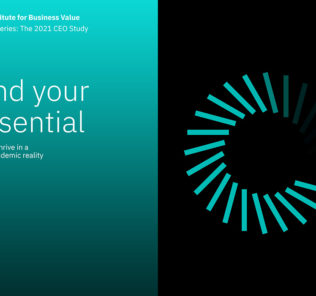Gastblog Jeroen Tas, Philips, over ‘The Internet of Medicine’
Eén van de sectoren waarin The Internet of Things een cruciale rol kan spelen, is die van de gezondheidszorg. Al jaren stijgt de behoefte aan zowel goede medische zorg als thuis- en nazorg. Met eveneens stijgende kosten als gevolg. Terwijl de beschikbare financiële middelen eerder dalen dan stijgen.
Het vormt een aardig dilemma. ICT in het algemeen, en IoT in het bijzonder, kunnen daar echter soelaas bieden. Jeroen Tas en zijn werkgever hebben daar nogal uitgesproken ideeën over. Wat Tas in het dagelijks leven doet? Hij is ‘CEO of Connected Care & Health Informatics and member of the Executive Committee bij Royal Philips’. Een mondvol. Maar deze CEO weet voor de verandering wél waar hij het over heeft. Kijk maar naar zijn CV.
Genoeg aanleiding om Tas eens een gast-podium bij IoTJournaal te geven. Aanleiding? Een gezamenlijke aankondiging van Philips en de Life-divisie van chipbakker Qualcomm. Even door de reclameboodschap heen prikken, maar dan worden ook de contouren van een ‘Internet of Medicine‘ zichtbaar.
Tas schrijft in het Engels. Wie dat niet machtig is, kan altijd een beroep doen op Google Translate. Take it away, Jeroen!
Last week Philips and Qualcomm Life announced a collaboration that will accelerate the deployment of digital health solutions. We anticipate a future in which care providers are equipped to create richer patient profiles and personalize care for each patient, improving outcomes across the board.
This will open up access to thousands of types of medical devices, like medical dispensers, blood glucose monitors, ventilators or blood pressure monitors that can now be part of HealthSuite solutions. It also allows the data from these devices to be securely and seamlessly integrated with clinical and contextual patient data.
The goal is to establish a comprehensive patient profile that is based on every touch point in the consumer’s personal health journey. That means that a measurement someone does at home, the consult that a specialist conducts, the feedback from a home caregiver, the clinical data from tests or studies – all the information is taken together to create a continuous, longitudinal trail to use as basis for care decisions.
The key is combining streaming data from medical devices, sensors and apps with rich patient profiles
Let me explain by giving a specific example. Across the United States Philips runs intensive ambulatory telehealth programs. The most fragile of elderly people that are living with one or even more chronic conditions are being monitored in their homes by their health systems. These programs are highly successful and we have seen big drops in re-admission rates (-52%) and cost of care (-26%). The key is combining streaming data from medical devices, sensors and apps with rich patient profiles. This allows us to prioritize patients for intervention. For instance, when we see a deterioration we can set up a 2-way video call with the patient to triage or in case of an acute situation provide the right emergency care.
Now, we can configure monitoring devices depending on the patient’s needs. Many people have to deal with not just one, but with two or even more chronic conditions. Treating these patients is complex, especially where chronic conditions influence one another. This group is also more likely to suffer accidents that could lead to an expensive hospital or nursing home stay. In a recent Philips study, data showed seniors with chronic conditions fell and required emergency transport up to 54 percent more often, compared to their peers with no chronic conditions. Personalized treatment plans are therefore a must.
Take Helen and Ralph McCurdy. They have been married for 67 years but Ralph now lives with a number of chronic conditions. Banner Health in Phoenix Arizona in the United States has developed a special connected health program together with Philips to support people like Ralph on a continuous basis. Ralph now measures his vital signs, like blood pressure, weight and fills in a personalized survey on a daily basis. This data is then automatically shared with the care team and added to a comprehensive health profile of Ralph that enables the doctor to pick up on early signs of health deterioration. Ralph and Helen also get realtime advice from their doctor via two way video on how to better manage Ralph’s condition.
Through HealthSuite, now integrated with the 2net ecosystem, we can add additional connected devices to support him. He can wear a personal emergency response pendant, which detects falls. If a patient also deals with COPD we can seamlessly add a medical ventilator and an SPO2 device. Or a connected blood glucose meter for a patient that suffers from diabetes. We can securely integrate the right devices associated with a clinical program. More importantly, we can bring the data from these devices and apps together with medical records and apply analytics to support care givers in performing definitive diagnosis and developing personalized treatment plans.
As part of the collaboration, Qualcomm Life leverages Philips HealthSuite as an open, secure, data management and storage solution for its medical-grade 2net Platform, allowing Qualcomm Life to tap into the value of health data through data normalization, aggregation, analytics and orchestration. Qualcomm Life customers can build new care applications (using the standard FHIR API), integrate with electronic health record systems, store normalized data, run analytics, and manage authorization and consents in a compliant and secure environment.
Perhaps the most important piece of this announcement is that it helps to establish an open, secured and standardized environment that lends itself to flexibility and scalability in the quest to personalize medicine. It’s a move that we believe is ultimately important to help clinicians create better outcomes for their patients.
En als dessert nog de bij dit soort teksten gebruikelijke disclaimer:
* The health-related information found above is meant for informational purposes only. It is not intended to serve as medical advice, substitute for a doctor’s appointment or to be used for diagnosing or treating a disease. Please work with your health care provider to evaluate the best treatment options for you.











